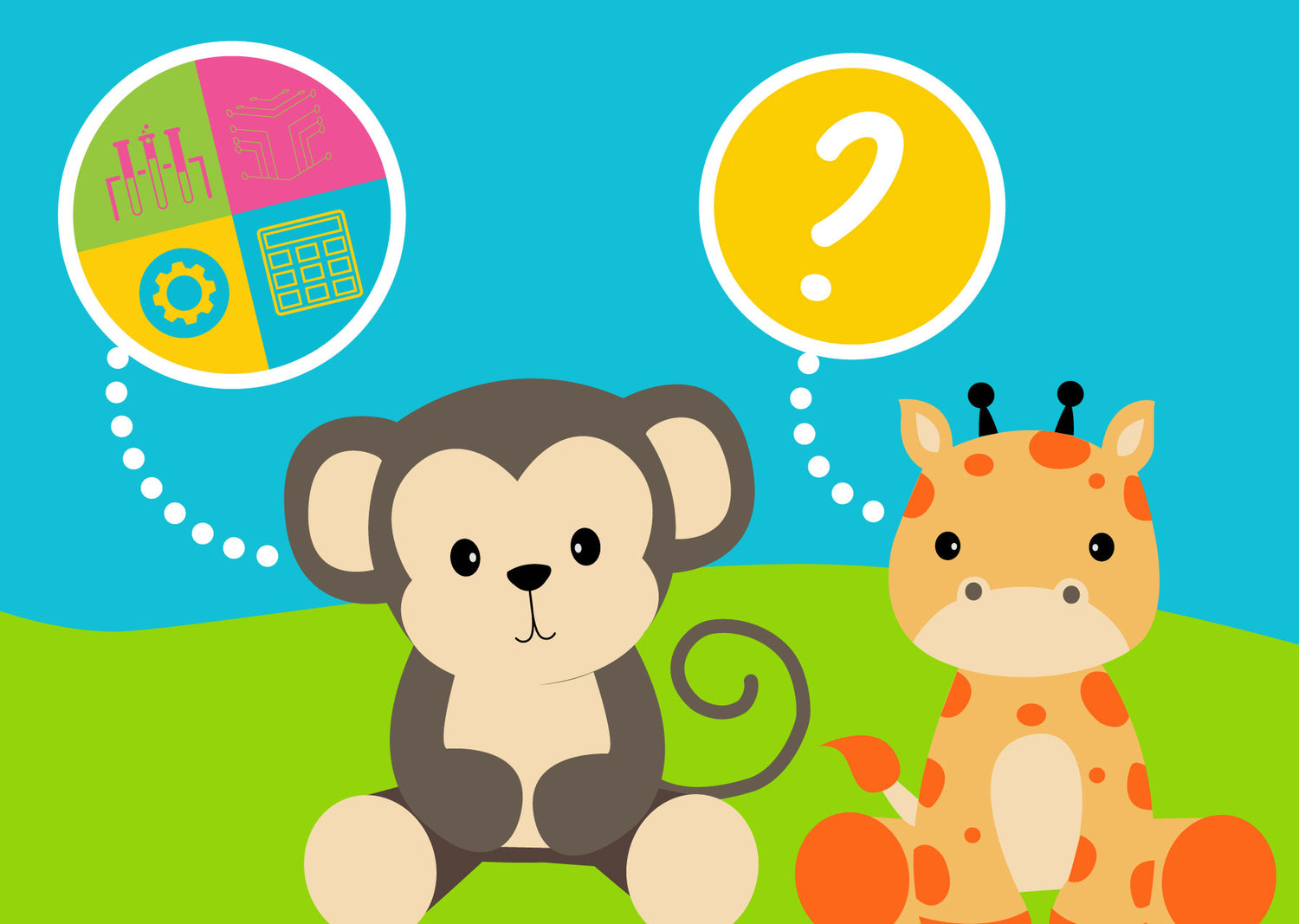The Prime STEAM Attributes

The toy affords all six attributes that
should underlie a STEAM toy.
Indicators: A rating of ‘Good’ or ‘Excellent’ for each of the six attributes:
Characteristics |
Poor |
Good |
Excellent |
|---|---|---|---|
Real World Relevance |
Has no relevance to the real world and no opportunity to practice applying knowledge. |
Allows hands-on observation and use, for example: seeing real working mechanics, using measurements, or using scientific tools. Relevance to the real world isn’t clear, for example: a puzzle game. |
Has clear relevance and application to the real world. Allows hands-on observation and use, for example: seeing real working mechanics, using measurements, or using scientific tools. |
Active Involvement |
Children cannot be actively involved in the learning experience through observation or hands-on play. |
Allows children to be actively involved in the learning experience, but a large amount of support from an adult is required to do so. |
Allows children to be actively and independently involved in the learning experience. They can look at and physically manipulate materials to further their understanding and/or solve problems. |
Arts |
Gives children no opportunities to tap into their creative and imaginative skills to support divergent thinking. Children have no requirement to use the right (creative) side of their brain. |
Gives children some opportunities to tap into their creative and imaginative skills to support divergent thinking. Children have some chances to use both the left (logical) and right (creative) sides of their brain, but this is limited. For example, expressing themselves through the arts such as design, drama (including role play), dance, music, history, or language. |
Actively encourages children to tap into their creative and imaginative skills to support divergent thinking. Children have the chance to use both the left (logical) and right (creative) sides of their brain. For example, expressing themselves through the arts such as design, drama (including role play), dance, music, history, or language. |
Characteristics |
Poor |
Good |
Excellent |
|---|---|---|---|
Logical Thinking |
There is no need to use logical thinking when playing with the toy, for example: there are no opportunities to problem solve, no exploration or use of logic principles such as cause and effect. |
Promotes learning through trial and error and/or investigative learning. Encourages children to explore logical concepts, such as cause and effect. |
Allows children to identify and apply solutions to problems independently. Promotes learning through trial and error and/or investigative learning. Encourages children to explore logic principles, such as cause and effect. |
Free Exploration |
Children do not have opportunities to experiment repeatedly. They are unable to explore and find answers to a range of questions. |
Opportunities to explore and experiment are available but limited. For example, children may only be able to carry out a science experiment once, or cannot take a model apart once built in order to rebuild it. |
Gives children the freedom to repeatedly explore their own ideas, such as exploring a range of hypotheses through science experiments or designing their own codes to see what they do. |
Supports Step-By-Step Learning |
Has limited guided learning opportunities. It could either be too simple for the target age, thereby not helping children to grow their skills; or is too complex for the target age and tries to develop skills that are not yet achievable. |
Allows children to continually extend and apply their knowledge, reinforcing learning within their comfort zone. Activities included with the toy offer different levels of challenge, gradually increasing in difficulty, to help children grow their confidence. |
Includes additional guidance for adults, that can help them support the child’s learning to extend their knowledge past their comfort zone. Activities included with the toy offer different levels of challenge, gradually increasing in difficulty, that may help children grow their confidence. |

